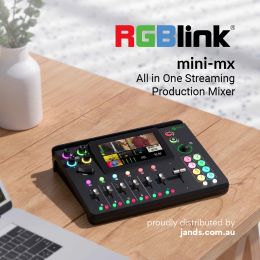Subscribe to CX E-News
All too often it’s the top-end that people reach out for consoles and in mix windows when a sound lacks clarity in a mix. it’s their go-to solution – a knee jerk reaction to a problem that’s often best solved by vastly different means.

When this unthinking, reactive approach to mixing is deployed too often, the common outcome is a mix that’s blindingly bright.
Ironically, nothing is clear or detailed about a blindingly bright mix. It’s like staring at the sun. When the top-end of a mix contains too much information from too many sources, the average listener can’t cope and their physical reaction is to turn away. Obviously this isn’t a desirable outcome.
Thin, harsh and distorted tone is not something most of us are striving towards, yet every day engineers the world over fall into this same trap, even when the danger seems obvious to them. Starting out with sounds that are nicely balanced, full of rich tone and depth, by the time they’ve worked their so-called ‘magic’ things have grown harsh and distorted.
How does this happen? What causes a mix engineer to wander so far off track without realising there’s a problem?
As much as I’d love for the answer to be a simple one, it isn’t.
BALANCING TONE & EGO
There are myriad reasons why mix engineers lose their way with respect to tone during a session. Poor engineering skills rank highest among them. Misleading control room acoustics and technical problems with studio equipment are other factors that can also wreak havoc with mix tone.
Then there’s the simple lack of any A/B comparison by the engineer or artist with other music releases. When used regularly, commercial music releases act like bowling alley bumpers, keeping your mix tone on track instead of allowing it to roll into the gutter.
Time allocation – or lack thereof – is another tone killer. No-one can realistically be expected to build a complex, detailed mix from a large recording file in three hours and have it compare favourably with a commercial hit that was mixed through a large analogue console at a commercial studio for 10 days.
For an outcome to be reached that everyone is happy with, time must be devoted to exploring, developing and refining a mix’s tone.
Artists can also set a mix session off course with frequent ill- conceived requests and opinions. Off-the-cuff remarks about an instrument’s tone can be dangerous if they’re not well considered by the artist, or well interpreted by the engineer. Then again, sometimes the problem can be as simple as where the client is sitting in the control room. Up the back on the couch can often be the worst possible position from which to judge a song’s tone.
Irrespective of the cause, overly bright mixes generally sound cheap when finally compared to other songs in the real world. If you find yourself up this garden path, don’t despair. The cure is often quite straightforward.
THE BRIGHTEST MUST GO
One of the simplest ways to get a mix back on track when it has gone off the tonal rails is to analyse two of its most basic aspects: the ‘key ingredient’ – the musical element around which the entire mix is constructed (often the vocal) – and the ‘mix scorchers’: those elements most severely affecting the overall brightness of the mix.
Once you’ve identified these two components, temporarily mute the ‘mix scorchers’. It might be one instrument; it might be 20. Either way, mute them for now so that you can both assess the tonal integrity of the key ingredient, and give your ears a rest. If this ingredient is the vocal, now ask yourself questions about its tone:
“Is it too glassy, or are there only occasional words that tip the top-end scales?”
“Is the dynamic range okay, or would the vocal be made more intelligible if the compression were more intense?”
“Is it overly sibilant now that the super bright elements of the mix are missing?”
“Is there enough low-end in the voice – around 60 – 150Hz – to balance the high-end elements?”
Once you’ve analysed the vocal with fresh ears in the absence of the scorchers, make any tonal changes you see fit so that you’re happy with the sound. Now add the offensively bright instruments back in one element at a time, on each occasion asking yourself these sorts of questions:
Is this instrument at the right volume relative to the vocal?
Are other aspects about this sound – the compression ratio, panning position and effects etc – correct?
Can I reduce the top-end of this sound and, more crucially, is this sound’s fundamental tone dominating, or have I EQ’d mostly extraneous top-end into it in a desperate bid to make it compete?
More often than not, things like electric guitars will have far too much top-end (above say 7kHz) and not enough midrange (say 1 – 2kHz) as they jostle for position in the mix. Perhaps they only need to be turned up 1dB instead, or perhaps they simply lack compression, rather than requiring hyper tops.
The trick is to consider each instrument’s fundamental frequency and allow that tone to dominate each of the individual sounds in the mix, rather that expecting everything to compete for the same hyper-bright tonal space.
If a particular sound still feels difficult to spot in the mix once you’ve taken some of the highs out of it – it’s probably less visible than it was before by now – try turning it up… don’t just reach for the top-end boost again!
Repeat this technique as you reinstate each of the previously hyped up elements and you may just find that your once shrill, nasty mix has dissolved away. It may
not be perfect yet, but at least you’ll be on a path to resolving the tonal imbalance, rather than sailing further off course.
FATIGUE
Despite anyone’s level of professionalism or experience, we all get tired at some point during a mix. Being able to recognise when you’re fried and need a break is as important an engineering skill as knowing how to work a compressor.
If you’re mixing a song – with or without clients present – it’s vitally important that you take a break, even if it’s for only 10 minutes (though half an hour is better) when you sense that you’re losing your way in a mix.
Nothing is more revealing about a mix than a fresh perspective. A cliché though it may be, a fact it nonetheless is. I typically achieve more in 10 minutes at 9am at the start of a session than I often can in two hours late at night. Put another way, though I might be doing good work at 2am, I have a clearer understanding of how the mix sounds macroscopically when I listen to it after a decent break and with the screen off, without fiddling with knobs and plug-ins.
One of the key aspects of this notion of the ‘fresh perspective’ is that, quite apart from the physical recalibration a break for dinner or a good night’s sleep affords you, time away from a mix releases you from the millions of tiny decisions that have accumulated in your head over the period you’ve spent at the helm. A ‘fresh perspective’ is thus a new start, where the song can be heard as a whole again; all the fine detail mostly set aside in your head.
Having a decent break is a powerful tool… don’t waste its potential or feel compelled to work ’til you run out of fuel.
NOT SO BRIGHT
Another side of mixing that can lead to overly bright results is the expectation by an engineer that everything, no matter how well recorded, arranged or performed, must be meddled with. If you approach every mix under the assumption that your ‘fingerprint’ or ‘signature’ – call it what you will – must be on every sound, you’ll often screw things up.
Not everything needs more tops, more compression and more reverb. Sometimes the best thing for a sound is for it to be left the hell alone. ‘Signatures’ are for toy cricket bats, not every mix. Without doubt some of the most annoying mix outcomes are the ones where the engineer felt determined to look cool, or smart, or both. Mostly this only makes you look foolish.
When you’re at the console, stay humble, serve the mix, not your ego, and the next time you find yourself staring at the sun, turn away and do a tonal stocktake. Your mix will always thank you for it.
Subscribe
Published monthly since 1991, our famous AV industry magazine is free for download or pay for print. Subscribers also receive CX News, our free weekly email with the latest industry news and jobs.












